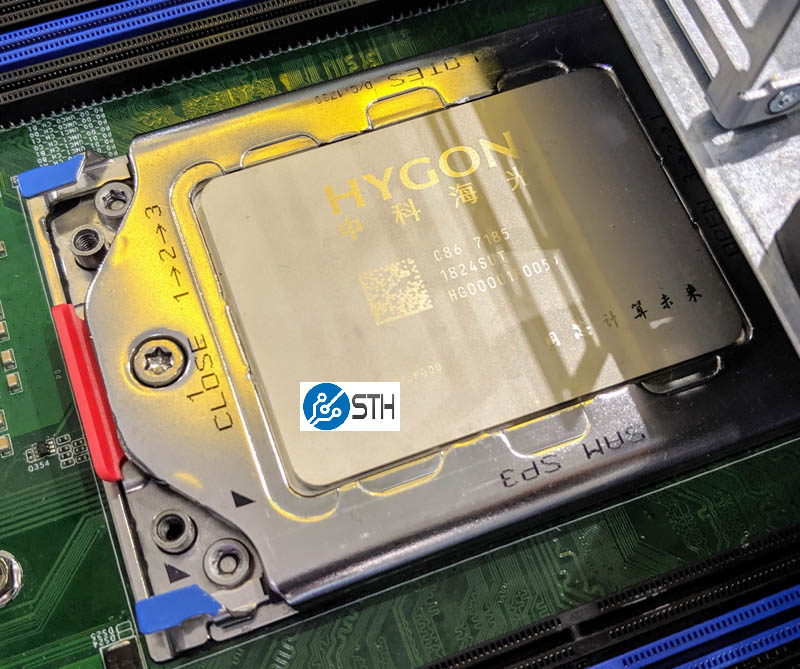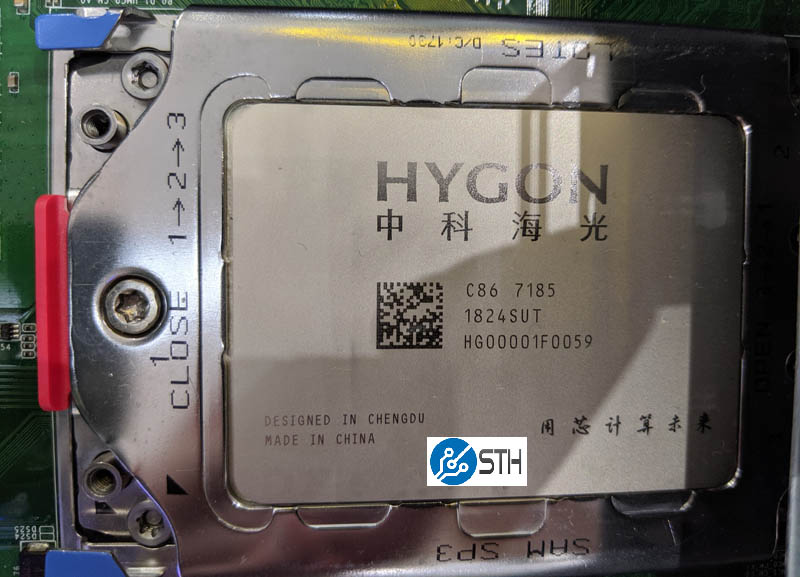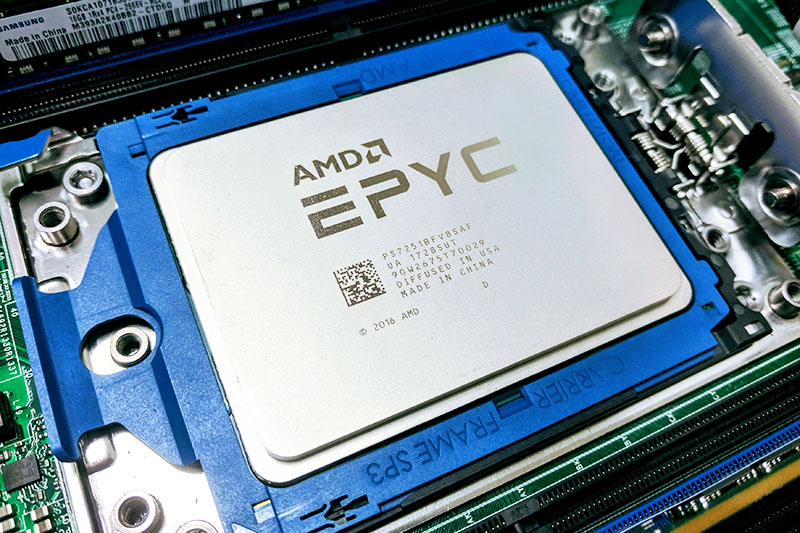In 2016, AMD entered into a joint venture with Tianjin Haiguang Advanced Technology Investment, Co., Ltd to license IP for its upcoming AMD EPYC 7001 series “Naples” CPUs. That spawned the Hygon Dhyana, a licensed x86 compatible chip primarily aimed at the Chinese market. AMD’s 51% subsidiary HMC manufactures the chips in China complying with its licensing obligations while Hygon, where AMD is a minority shareholder, develops the chips. We first saw the chips being used in the Sugon Nebula Phase Change Immersion Cooling a Unique Platform at SC18, but we could not see the actual chips. At Computex 2019, we got a view.
Hygon Dhyana Spotted an AMD EPYC Cousin
We nabbed two Hygon Dhyana shots from the depths of a small Computex 2019 booth that was not even a server vendor. Digging in booths you would not expect sometimes yields the unexpected. These are perhaps the first Hygon Dhyana pictures most of our readers will ever see.

As one can see, they are sitting in a Lotes SP3 socket. I did not get full photos, but the platform appeared to be an 8 channel 2 DIMMs per channel DDR4 platform.

One fairly interesting note here is that the carrier tab is bright red on the Hygon Dhyana. Compare this to the AMD EPYC which uses a blue carrier.

Even the QR codes appear to be in the same locations.
Final Words
From a business standpoint, this makes a lot of sense both for AMD at the time and for others involved. Given what we have seen, we would expect these chips to largely align with the AMD EPYC 7001 series “Naples” specs. It is unlikely we will ever test a server with one of these chips, however, it is great to see that the work by engineers involved has yielded a tangible product.





Countdown to finding these on eBay. I wonder if these units are 100 percent electrically compatible and not using some physical means to prevent their use other than firmware on unauthorized mainboards.